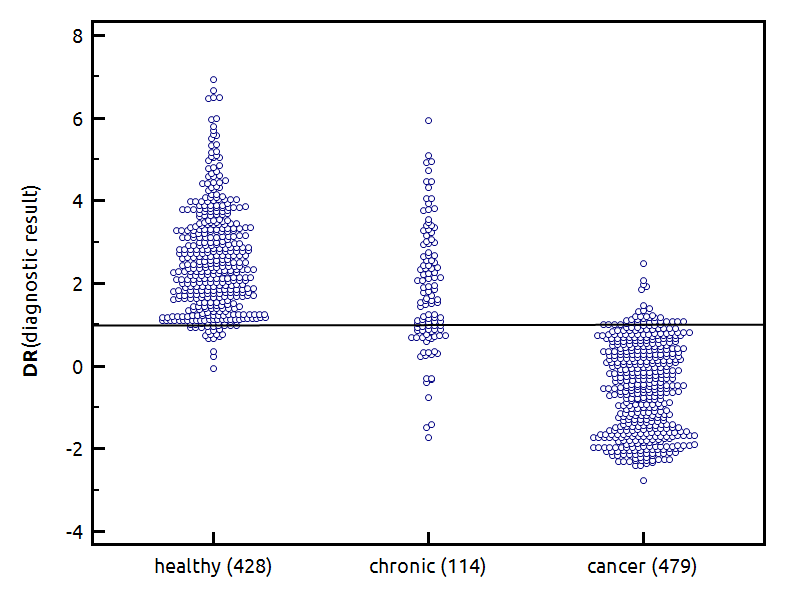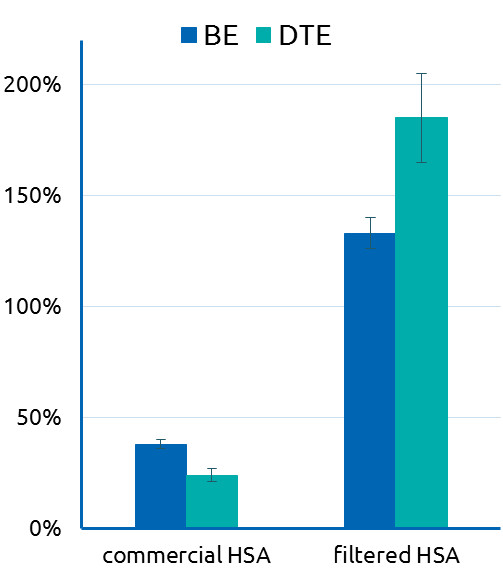Information about Albumin-Analysis
The Albumin-Functionality-test offers a possibility for an easy and fast detection of an active tumor growth. The peptides and lipids released by tumor cells into the blood can bind to albumin and therefore affect the albumin function by changing the conformation.
Dependent on localization, the Albumin-Funtionality-test shows a hight specificity (approx. 90%) and a high sensitivity (90%). Respective information can be found here.

Comparison of healthy individuals, patients with chronic diseases and tumor patients: 428 healthy individuals, 114 patients with chronic diseases and 479 tumor patients
The Albumin-Functionality-test in patients with several liver diseases showed in studies, that the detoxification efficiency is significantly reduced in comparison to the control group. Information please find here .
Within a study in contrast to albumin concentration binding efficiency was able to significantly differentiate between patients with stable cirrhosis (Stable) and healthy controls. The same holds true for differentiation of patients with an acute-on-chronic liver failure (ACLF) and patients with acute decompensated cirrhosis (AD).

In vitro experiments showed, that adding octanoates to albumin (used as stabilizer in commercial albumin solutions) changed the transport properties of albumin, dependent on the concentration. At ocatanoate concentrations above 3 mM a distinct reduction of the detoxification efficiency was observed. More information please find here.

After filtration of the albumin solution with the Hepalbin ™ – Adsorbers (Albutec GmbH) stabilizers can be reduced. First result showed strikingly improved transport parameters of the albumin:

In several pilot studies [information please find here] a clear difference in transport parameters between patients, which develop a sepsis and patients without septic process could be shown. A distinction of patients would be possible 12 hours before diagnosis with standard methods.
